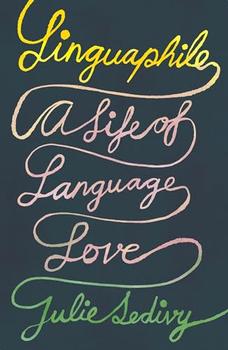Summary | Excerpt | Reviews | Beyond the Book | Readalikes | Genres & Themes | Author Bio

Three Crucibles in the Latin American Story
by Marie Arana
This is a book about three components of Latin American society that have shaped it for a thousand years. It does not pretend to be a definitive, comprehensive history. Rather, it is meant to cast light on the legacy of the Latin American people and on three elements of our past that may suggest something about our future. Certainly there are other obsessions we share that make for a brighter portrait of the region: our infatuation with art, for instance; our enthusiasm for music, our culinary passions, our love of rhetoric. The Spanish language that flows from the pens of Latin Americans has produced one of the most strikingly original literatures of our time. There are also few regional traits that shine more brightly than our fidelity to family or our propensity for human warmth. But none of these, in my view, has moved populations, marked the landscape, and written history as forcefully as Latin America's fixations on mining, or its romance with brute force, or religion.
These obsessions are not tidy strands that can be addressed as independent narratives. Their histories over the course of the past one thousand years have clashed, overlapped, become intricately intertwined, just as gold, faith, and fear are tightly woven skeins in the life of Leonor Gonzáles. But Latin America's inclinations to religion and violence, along with its stubborn adherence to an ancient form of extractive commerce that doesn't necessarily lead to lasting development, have fascinated me for years. I believe the history of these inclinations can tell us much about who we Latin Americans are. And we are, as a historian once said, "a continent made to undermine conventional truths," a region unto ourselves, unlike any other, where theories or doctrines fashioned elsewhere seldom have purchase. I also believe that, for all the years I have spent following the ways and warps of this skeined history, it cannot possibly tell the whole story.
How do you explain a hemisphere and its people? It's an impossible task, really, made more complicated by five hundred years of skewed historical record. All the same, I am convinced that there is a commonality—a concrete character, if you will—that emerges from the Spanish American experience. I am also convinced that this character is a direct product of the momentous confrontation between two worlds. We are defined by a grudging tolerance born of this experience. There is no northern equivalent.
In Latin America, we may not always know exactly what breed we represent, but we do know that we are more bound to this "New World" than we are to the "Old." After centuries of unrestrained mixing, we are more brown than white, more black or Indian than some might think. But, since raw political power has been held stubbornly by every anxious generation of "whites" since First Contact, a true reckoning of our identity has always been a tenuous proposition. Call it what you will, but the enduring presence of indigenous history in Latin America—quite unlike its counterpart in the North—suggests there is a very different explanation here. I offer mine in all humility in hopes of relaying something of the perspective it has given me.
Although my father's family has had roots in Peru for almost five hundred years, my grandmother Rosa Cisneros y Cisneros de Arana was a great enthusiast of all things Spanish. She often spoke to me of Spain's custom of sending sons into different walks of life as a way of building the pillars of a robust society. One son, as the logic went, would be a man of the world (a lawyer, politician, or businessman); the second, a military man; the third, a priest. The first would ensure prosperity by having a hand in the nation's power and wealth; the second would maintain the peace by serving his country as a soldier; the third would throw open the gates to heaven by teaching us the way to God. I never saw reference to this custom made in history books, although I heard of it again and again as I traveled the countries of Latin America. In time, I saw that a banker, a general, and a bishop were indeed pillars of our shared society; they were precisely what kept the oligarchy, genders, and races in the rigid caste system that Spain had created in the first place. That triumvirate of sovereignty—of princes, soldiers, and high priests—had held for the Incas, Muíscas, Mayans, and Aztecs as well. In many cases, a supreme ruler was expected to be all three. Call it what you will, but the formula of triangulated control has worked for centuries in the Americas of the South. It allowed ancient cultures to expand and conquer. It allowed colonizers a firm lock on the pockets, fists, and souls of the colonized. For all Latin America's gifts to the world—for all the storied civilizations of our past—the region continues to be ruled by what has always held sway here. By silver, sword, and stone.
Excerpted from Silver, Sword, and Stone by Marie Arana. Copyright © 2019 by Marie Arana. Excerpted by permission of Simon & Schuster. All rights reserved. No part of this excerpt may be reproduced or reprinted without permission in writing from the publisher.




A truly good book teaches me better than to read it...
Click Here to find out who said this, as well as discovering other famous literary quotes!
Your guide toexceptional books
BookBrowse seeks out and recommends the best in contemporary fiction and nonfiction—books that not only engage and entertain but also deepen our understanding of ourselves and the world around us.